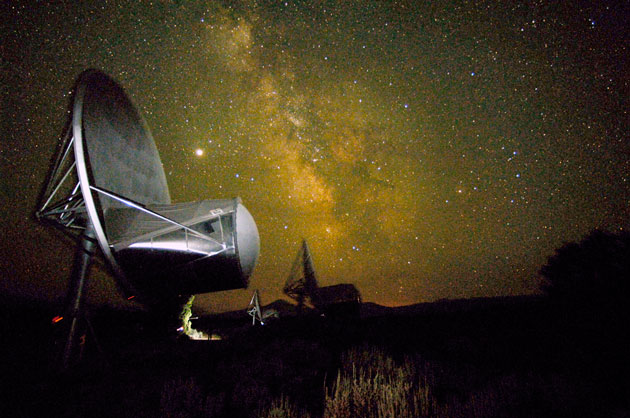Picture yourself under a star-filled sky, the Milky Way glowing overhead, and a question lingering: Are we alone in the universe? This ancient curiosity drives space exploration, with astrobiology leading the charge to find extraterrestrial intelligence and life beyond Earth. Today, NASA’s James Webb Space Telescope and Europa Clipper mission, powered by cutting-edge space technology, bring Americans closer to answers. Could microbes thrive in Jupiter’s oceans? Or do signals from alien civilizations await on habitable planets? At The Astronomy Insider, we unravel the mysteries of planetary science, its latest discoveries, the methods behind the search, and how you can join the cosmic quest from the U.S. Get ready to explore the stars!
What is Astrobiology in Space Exploration?
Astrobiology, a cornerstone of space exploration, blends planetary science, biology, chemistry, and geology to investigate life’s potential beyond Earth. It focuses on three key questions:
- What enables life?: Life requires liquid water, chemicals like carbon, hydrogen, nitrogen, oxygen, phosphorus, and sulfur (CHNOPS), and energy sources, such as sunlight or volcanic heat.
- Where might life exist?: Targets include Mars, Jupiter’s moon Europa, Saturn’s Enceladus, and habitable planets in their stars’ habitable zones, where liquid water can persist.
- How do we detect life?: Scientists seek biosignatures, like gases (methane, oxygen, nitrous oxide) in atmospheres, complex organic molecules, or signals from extraterrestrial intelligence, such as radio waves or laser emissions.
Astrobiology studies Earth’s extreme environments, like deep-sea hydrothermal vents, to model alien conditions. Right now, space missions like James Webb and Europa Clipper are fueling excitement, with discoveries trending on Twitter/X.
The History of Seeking Alien Civilizations
The quest for alien civilizations dates back centuries. In the 4th century BC, Epicurus suggested other worlds might harbor life. In 1584, Giordano Bruno proposed stars were suns with planets, a heretical idea at the time. By the 19th century, “canals” on Mars, seen through early telescopes, sparked tales of Martian societies – later debunked as optical illusions.
The 20th century marked real progress. In 1960, Frank Drake launched the SETI program, a pioneer in space exploration, to listen for extraterrestrial intelligence. His Drake Equation estimates the odds of communicative alien civilizations. The 1990s brought the first exoplanets, confirming planets are common, with over 5,500 cataloged today. Space missions like Viking (Mars, 1976), Galileo (Jupiter, 1995), and Cassini (Saturn, 2004) set the stage for current efforts.
How Space Technology Hunts for Extraterrestrial Intelligence
The search for life leverages advanced space technology and U.S.-led space missions. Key approaches include:
- Habitable Planets and James WebbNASA’s James Webb Space Telescope, a marvel of space technology, is revolutionizing planetary science. Recently, it detected water vapor, carbon dioxide, and methane in the atmosphere of K2-18b, a habitable planet 120 light-years away. These biosignatures could hint at life, though non-biological causes are possible. Webb’s transit spectroscopy analyzes starlight filtered through planetary atmospheres, a breakthrough in space exploration. Targets like TRAPPIST-1e are next, with findings driving U.S. searches for “life on exoplanets.”
- Ocean Moons: Europa and EnceladusEuropa (Jupiter) and Enceladus (Saturn) are astrobiology hotspots. Europa’s ocean, holding more water than Earth’s seas, lies beneath an icy crust. NASA’s Europa Clipper, a flagship space mission, will use radar and spectrometers to search for organic molecules and hydrothermal activity. Enceladus’ geysers, rich in organics, are future targets. These moons mirror Earth’s hydrothermal vents, suggesting life could exist, a focus of planetary science.
- Mars: Traces of Ancient LifeMars, with ancient rivers and lakes, is a key target. NASA’s Perseverance rover, exploring Jezero Crater, collects samples for future analysis. Recent organic molecule discoveries have boosted hopes for fossilized biosignatures, making “life on Mars” a hot U.S. search term.
- SETI and Alien CivilizationsThe California-based SETI program, a leader in extraterrestrial intelligence research, uses the Allen Telescope Array to scan for signals from alien civilizations. It targets stars like Proxima Centauri, 4.2 light-years away. AI now enhances SETI’s data analysis, a leap in space technology, though no signals are confirmed.
- Earth’s Extreme EnvironmentsAstrobiology studies Earth analogs, like Chile’s Atacama Desert or Antarctica’s subglacial lakes, to model alien worlds. These guide space missions, informing tools for Mars or Europa.
Implications of Finding Alien Life
Discovering life would transform:
- Science: It would reveal if life is common, advancing planetary science.
- Philosophy: It would redefine humanity’s cosmic role.
- Culture: It would inspire art and films like Contact, fueling America’s alien obsession.
- Technology: Space exploration drives innovations, benefiting industries like aerospace, with companies like SpaceX and Boeing as key players.
Even without life, astrobiology expands our horizons, blending astrophysics and imagination.
How to Engage with Space Exploration
You can join the hunt from the U.S.:
- Stargazing: Use Stellarium or Sky Tonight to find exoplanet stars like TRAPPIST-1. Jupiter shines now, visible with binoculars in Midwest skies, tying to Europa’s potential.
- Celestial Events: The September partial lunar eclipse, clear in Western states like Nevada, and the August Venus-Jupiter conjunction, stunning in the Colorado Rockies, spark cosmic wonder. The Perseid meteor shower in August is a highlight.
- Observatories: Visit Lowell Observatory (Arizona) or Griffith Observatory (California) for planetary science talks.
- Science Updates: Follow NASA (@NASA) on Twitter/X for James Webb and Europa Clipper news.
- Earth Analogs: Research Antarctica’s extreme environments to connect with astrobiology.
Tips for Amateur Astronomers
- Dark Skies: Seek spots like Acadia National Park (Maine) or Joshua Tree (California) via darksky.org.
- Gear: 7x50 binoculars or a small telescope show Jupiter’s moons.
- Community: Join events at Hayden Planetarium (New York City) during the May planetarium centennial.
- Share: What do you think about alien civilizations? Email contact@NASA.com and subscribe!
Sources
- NASA Science. “Astrobiology: The Search for Life.” Accessed May 29, 2024. https://science.nasa.gov/astrobiology/
- ESA. “Europa Clipper: Exploring Jupiter’s Moon.” 2024. https://www.esa.int/science-exploration/europa-clipper
- “James Webb Finds Water Vapor on Exoplanet K2-18b.” Space.com, April 10, 2025.
- Post on X by @NASA, March 15, 2025.
- Post on X by @spacecom, April 20, 2025.






No comments:
Post a Comment